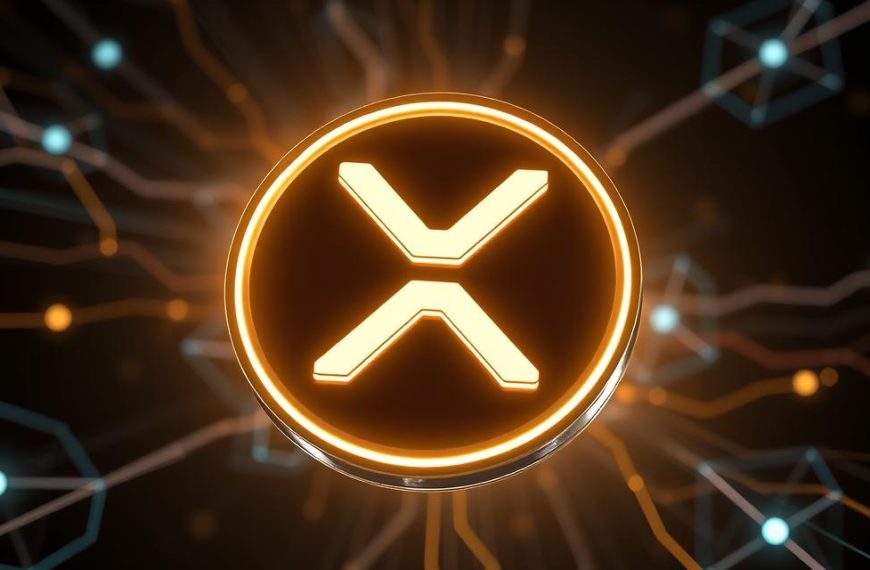Crypto staking has emerged as a popular method for cryptocurrency holders to earn passive income while contributing to blockchain network security and operations. By locking up their digital assets, investors can put their existing crypto tokens to work, earning rewards in the process.
The concept is similar to earning interest in traditional finance, but instead of a bank, you’re entrusting your tokens to a blockchain protocol that rewards you for helping maintain its network. This article will explore the fundamentals of crypto staking, from basic concepts to advanced strategies, to help you understand how to potentially generate income from your digital assets.
Understanding Crypto Staking: The Basics
Staking cryptocurrencies represents a shift towards more energy-efficient and accessible ways to participate in blockchain networks. This method allows holders of cryptocurrencies to earn rewards by validating transactions and supporting the network, rather than relying on energy-intensive mining operations.
What Is Staking Crypto and How It Differs from Mining
Crypto staking involves holding a certain amount of cryptocurrency in a wallet or on a platform to support the operation of a blockchain network. Unlike mining, which requires significant computational power to solve complex mathematical problems, staking is based on the principle of holding a certain amount of cryptocurrency to validate transactions and create new blocks. This fundamental difference reduces the environmental impact associated with energy consumption.
Key differences between staking and mining:
- Energy consumption: Staking consumes significantly less energy than mining.
- Validation method: Staking validates transactions based on the amount of cryptocurrency held, whereas mining relies on computational power.
- Hardware requirements: Staking does not require specialized hardware, unlike mining which needs powerful computers.
The Role of Proof of Stake (PoS) in Blockchain Networks
The Proof of Stake (PoS) consensus mechanism is central to crypto staking. It selects validators based on the amount of cryptocurrency they hold (or “stake”) and the duration for which it is held. This method ensures that validators have a vested interest in the network’s security and integrity.
The role of PoS extends beyond transaction validation, creating an economic framework that aligns the interests of token holders with the long-term health and security of the blockchain network. Various implementations of PoS exist, each with unique characteristics regarding validator selection, reward distribution, and security measures.
| Consensus Mechanism | Energy Consumption | Validation Method |
|---|---|---|
| Proof of Work (PoW) | High | Computational Power |
| Proof of Stake (PoS) | Low | Stake-based Validation |
Understanding how PoS works is essential for anyone considering staking their cryptocurrencies, as it explains both the mechanism behind earning rewards and the security model protecting the network.
How Crypto Staking Works
To understand how crypto staking works, it’s essential to delve into the technical aspects that underpin this process. Crypto staking is a complex mechanism that involves validators, network participants, and a robust security framework.
The Technical Process Behind Staking
The technical process behind staking involves several key components. Validators are responsible for verifying and batching transactions into blocks, which are then added to the blockchain. To become a validator, participants must stake a minimum amount of the network’s native cryptocurrency as collateral. This collateral serves as an economic incentive for honest behavior and as a security mechanism against potential attacks. The validation process typically involves running specialized software on a validator node that remains connected to the network, verifying transaction legitimacy according to the blockchain’s consensus rules.
| Key Components | Description |
|---|---|
| Validators | Verify and batch transactions into blocks |
| Collateral | Minimum amount of cryptocurrency staked as security |
| Validator Node | Specialized software connected to the network |
Validators and Their Role in Transaction Verification
Validators play a crucial role in the staking process by verifying transactions and creating new blocks to maintain the integrity of the blockchain. They check the work of other validators, ensuring the accuracy and efficiency of the blockchain. Validators are required to stake their own coins as collateral to discourage malicious activity. If a validator acts maliciously, there are financial repercussions, known as slashing, and the validator can lose some or all of their coins. For more information on crypto staking, you can visit Britannica’s guide on crypto staking.
The validator selection process varies across different blockchain networks, with some implementing additional mechanisms like reputation systems or randomized selection to ensure fair distribution of validation opportunities. By accurately validating transactions and proposing valid blocks, validators are rewarded with newly minted tokens and/or transaction fees, creating a financial incentive for continued participation and honest behavior.
Types of Crypto Staking Methods
The world of crypto staking is diverse, with multiple approaches to suit different investor needs. As the cryptocurrency landscape continues to evolve, understanding the various staking methods is crucial for maximizing returns and minimizing risks.
Solo Staking vs. Pooled Staking
Solo staking involves individual validators managing their own staking infrastructure, while pooled staking allows multiple participants to combine their assets and share the rewards. Pooled staking, often facilitated through staking pools, is more accessible to individual investors who lack the technical expertise or resources to solo stake.
Delegated Staking and Staking as a Service
Delegated staking enables users to delegate their staking power to a third-party validator, while staking as a service providers offer a range of solutions, including infrastructure management and reward distribution. These services simplify the staking process, making it more accessible to a broader audience.
Exchange Staking and Liquid Staking
cryptocurrencies directly on an exchange, which handles the technical aspects and distributes rewards. Liquid staking takes this a step further by issuing representative tokens that can be traded or used in DeFi applications, providing liquidity to stakers.
The development of these staking methods has significantly enhanced the flexibility and accessibility of crypto staking, creating new opportunities for investors to engage with the cryptocurrency ecosystem.
Getting Started with Crypto Staking
The process of getting started with crypto staking involves several key decisions and actions. To start staking your crypto assets, you’ll need to follow a series of steps that ensure you’re using the right tools and strategies for your investment goals.
Choosing the Right Cryptocurrency for Staking
Not all cryptocurrencies support staking, so your first step is to choose a relevant token. Cryptocurrencies that use proof of stake or a similar consensus mechanism generally support staking. Research and select a cryptocurrency that aligns with your investment goals and risk tolerance.
Setting Up a Staking Wallet
After acquiring your chosen cryptocurrency, you’ll need to transfer it to a staking wallet. Ensure that your wallet is compatible with the cryptocurrency you’ve chosen and follow best practices for securing your wallet and its contents.
Step-by-Step Guide to Stake Your First Tokens
- Acquire the cryptocurrency you wish to stake through a reputable exchange or trading platform, ensuring it’s a proof-of-stake compatible token.
- Transfer your tokens to your chosen staking wallet, verifying all addresses and following security best practices.
- Navigate to the staking section within your wallet or staking platform to delegate your tokens to validators or activate your own validator node.
- Evaluate factors such as commission rates, historical performance, and community reputation when selecting validators.
- Confirm the staking transaction, understanding any network fees and the lock-up period for your staked assets.
By following these steps and choosing the right tools, you can successfully start staking your crypto assets and earning staking rewards. Monitor your staking positions and adjust your strategy as needed to maximize your returns.
Benefits of Staking Your Crypto Assets
Crypto staking offers a dual advantage: it provides a source of passive income and enhances the security and efficiency of blockchain transactions. This method of participating in the validation process on a proof-of-stake (PoS) blockchain not only rewards participants financially but also plays a crucial role in maintaining the integrity of the network.
Earning Passive Income Through Staking Rewards
Staking rewards provide a lucrative opportunity for passive income. Validators earn additional income by validating blocks, which incentivizes them to act in the best interest of the network. The more assets staked, the higher the potential rewards, making it an attractive option for long-term investors.
Contributing to Network Security and Efficiency
Staking contributes significantly to the security and efficiency of the blockchain network. Validators verify and batch transactions into blocks, ensuring the accuracy and efficiency of the blockchain. The security of the blockchain is directly proportional to the total value of staked assets, meaning each staker plays a meaningful role in protecting the network.
| Benefits | Description |
|---|---|
| Enhanced Security | Increased cost of potential attacks against the network due to staked assets. |
| Network Efficiency | Faster transaction processing and better experience for network users. |
| Economic Alignment | Validators and delegators are incentivized to preserve and enhance network value. |
Risks and Challenges of Crypto Staking
While crypto staking offers a lucrative opportunity for passive income, it is not without its risks and challenges. Investors must be aware of these risks to make informed decisions.
Market Volatility and Value Fluctuations
Crypto staking is not immune to market volatility. The value of staked assets can fluctuate significantly, impacting overall returns. For instance, if the value of the staked cryptocurrency drops, the value of the staking rewards also decreases.
Lock-up Periods and Liquidity Concerns
Many staking platforms require assets to be locked up for a certain period, reducing liquidity. This lock-up period can range from a few days to several months, during which time the staked assets cannot be accessed or transferred.
Slashing Penalties and Security Risks
Validators acting maliciously can face slashing penalties, resulting in the loss of some or all of their staked coins. Additionally, the security of the staking platform is crucial, as a security breach can lead to the loss of staked assets.
| Risk Type | Description | Impact |
|---|---|---|
| Market Volatility | Fluctuations in cryptocurrency value | Reduced returns on staked assets |
| Lock-up Periods | Assets locked up for a certain period | Reduced liquidity |
| Slashing Penalties | Penalties for validator misconduct | Loss of staked coins |
Common Staking Mistakes to Avoid
As with any investment strategy, crypto staking comes with its own set of common mistakes that investors should avoid. Token holders who are eager to earn rewards may not consider the entire spectrum of security risks associated with their decisions. For instance, participating in noncustodial staking without the necessary knowledge, security safeguards, or equipment can be detrimental.
Insufficient Research Before Staking
One of the most critical mistakes is insufficient research before staking. Investors should thoroughly understand the staking mechanism, the underlying blockchain, and the potential risks involved. Failure to do so can result in significant financial losses. It’s essential to research the staking platform, the cryptocurrency’s historical performance, and the overall market conditions before making any investment decisions.
Ignoring Lock-up Periods and Tax Implications
Another common mistake is ignoring lock-up periods and tax implications. Investors need to be aware of the lock-up periods associated with staking and plan their investments accordingly. Additionally, understanding the tax implications of staking rewards is crucial to avoid any potential legal or financial issues. Tax laws vary by jurisdiction, so it’s essential to consult with a tax professional if needed.
Compromising Security and Overinvesting
Compromising on security measures is a significant risk in crypto staking. Using insecure internet connections, storing seed phrases digitally, or using weak passwords can lead to the loss of staked assets and rewards. Moreover, overinvesting in staking can lead to concentration risk, where investors stake disproportionate amounts in single protocols or cryptocurrencies. A balanced approach to staking involves limiting staked assets to a reasonable percentage of one’s overall cryptocurrency holdings.
To avoid these common mistakes, investors should implement proper security practices, such as using hardware wallets for key storage and conducting regular security audits. By being aware of these potential pitfalls and taking steps to mitigate them, investors can maximize their returns and minimize their risks in the crypto staking landscape.
Conclusion: Is Crypto Staking Right for You?
Crypto staking represents a compelling opportunity for cryptocurrency investors to generate passive income from their holdings. However, determining whether it’s right for your specific situation requires careful consideration of multiple factors.
Your investment timeline, risk tolerance, and technical comfort level are crucial considerations. Staking tends to align best with long-term investment horizons due to lock-up periods and compounding benefits of reinvested staking rewards.
For those with appropriate risk tolerance and investment timelines, staking can enhance returns while supporting the networks you believe in. Ultimately, successful staking requires ongoing education about evolving protocols and careful selection of validators or staking platforms.




















